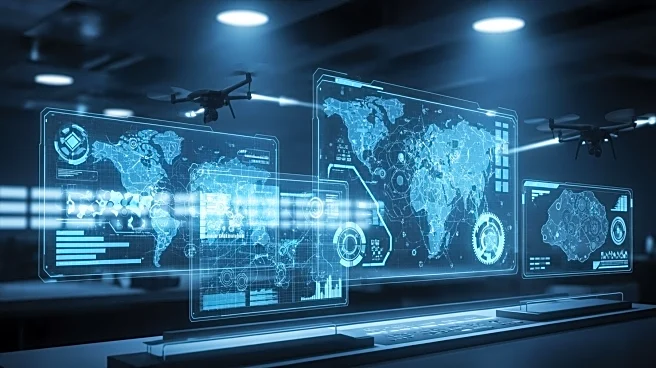What's Happening?
Amazon's threat intelligence team has revealed detailed findings on Iran's use of cyber-enabled kinetic attacks, a strategy that combines digital espionage with physical military strikes. The company documented
two case studies involving Iranian threat groups, Imperial Kitten and MuddyWater, which are linked to Iran's Islamic Revolutionary Guard Corps and the Ministry of Intelligence and Security, respectively. These groups have been observed using cyber operations to gather intelligence and coordinate missile strikes. For instance, Imperial Kitten compromised a ship's Automatic Identification System in December 2021, leading to a missile strike by Iran's allied Houthi forces in February 2024. Similarly, MuddyWater used compromised CCTV streams from Jerusalem to prepare for a missile attack in June 2025. Amazon has coined the term 'cyber-enabled kinetic targeting' to describe these operations, emphasizing the need for new defensive strategies that address threats spanning both digital and physical domains.
Why It's Important?
The revelation of Iran's cyber-enabled kinetic attacks underscores a significant shift in modern warfare, where digital and physical operations are increasingly intertwined. This evolution poses new challenges for national security and defense strategies, as traditional boundaries between cyber and kinetic operations dissolve. The ability to leverage cyber reconnaissance for physical attacks represents a force multiplier effect, enhancing the effectiveness of military operations. As nation-state actors adopt these tactics, there is a growing need for enhanced threat models and intelligence sharing among countries to counteract such strategies. Organizations previously considered low-risk may now be targeted for tactical intelligence, necessitating a reevaluation of cybersecurity measures across various sectors.
What's Next?
Amazon's findings suggest that cyber-enabled kinetic targeting will become more prevalent among adversaries, prompting a need for adaptation in defense strategies. Governments and organizations are urged to expand their threat models and develop new defensive strategies that account for the reality of these combined operations. Enhanced intelligence sharing and collaboration between nations will be crucial in addressing the evolving threat landscape. Additionally, there may be increased scrutiny and regulation of internet-exposed devices, such as security cameras, to prevent their exploitation in military operations.
Beyond the Headlines
The concept of cyber-enabled kinetic targeting raises ethical and legal questions about the conduct of warfare in the digital age. As cyber operations become integral to military strategies, there is a need to establish international norms and regulations governing their use. The blending of cyber and physical attacks challenges existing frameworks for conflict resolution and accountability, potentially leading to new forms of warfare that are harder to detect and attribute. This development also highlights the importance of cybersecurity in protecting critical infrastructure and civilian populations from being caught in the crossfire of cyber-enabled military operations.











